Paddington, directed by Paul King, captures the life of an orphaned bear who travels from Peru to London sponsored by his Aunt Lucy to seek a better life the mythic aspirations of most immigrants. As a young bear club Paddington is presented as a wilful, yet kind hearted character who exhibits dignity despite being faced with the cultural challenges of his geographic displacement. The issue of immigration and the colonial view of the uncivilised native is sub-textually explored in the film through the character of Paddington and his socialisation experiences. In the narrative he is presented as a clueless and potentially vulnerable outsider and is shown to be stupid in the eyes of a human due to his inability to grasp the constructed social codes within our society. Within the film the major themes such as colonialization, discrimination and immigration are alluded to throughout the narrativized adventures of hapless bear’s experiences in the city of London.
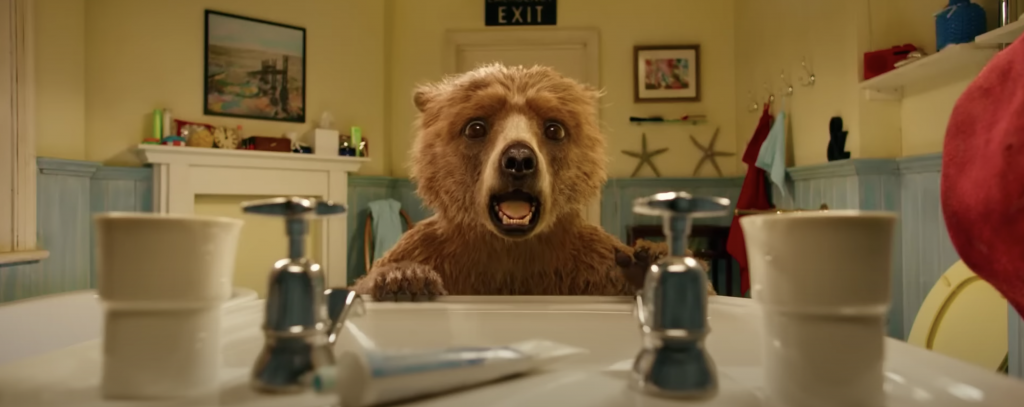
The scene focusses on Paddington inquisitively entering the bathroom firstly, having to step up onto his suitcase to reach the sink. The scene begins as he stares directly at the bathroom mirror camera. which for the viewer establishes the point of view shot of the camera as we directly watch his misguided actions as if we are looking in on a private momemt. This highlights Paddington’s inequality as his small animal form is not accommodated in a human world and this foregrounds the challenges that he faces not just as an outsider, but also a character with different physical features that are not accommodated in this new world. It also parallels with the young child’s experience of growing up and encountering an adult world as a smaller being, further reinforcing his relative lack of power in an adult human world. Paddington’s animalistic features such as having fur and paws anthropomorphically distinguishes his ‘difference’ from the humans who befriend him and signal his potential subordinate role in the film as he is the only bear in the Brown family. However, he also exhibits human characteristics which accord him with the special qualities of the film’s protagonist in being able to speak English, walk on two legs, wear clothing, and manipulate everyday objects, such as toothbrushes which he uses to clean his ears in this scene for example, to highlight his lack of access to the prescribed norms of human hygiene. The scene continues as he battles with most appliances in the bathroom and fights to ‘survive’ the harsh conditions of the human world. His ‘toxic’ relationship with technology and equipment is highlighted in his battle with the bathroom plumbing system. As the animated shower head. rises up from the bath and hisses at him aggressively like a snake, he holds up a toilet lid as shield and a toilet brush as a sword to defend himself from these villainous bathroom appliances. This shot establishes Paddington under stress as an ‘outsider’, and non-native persona in the film who is challenged by the new domestic environment he encounters.
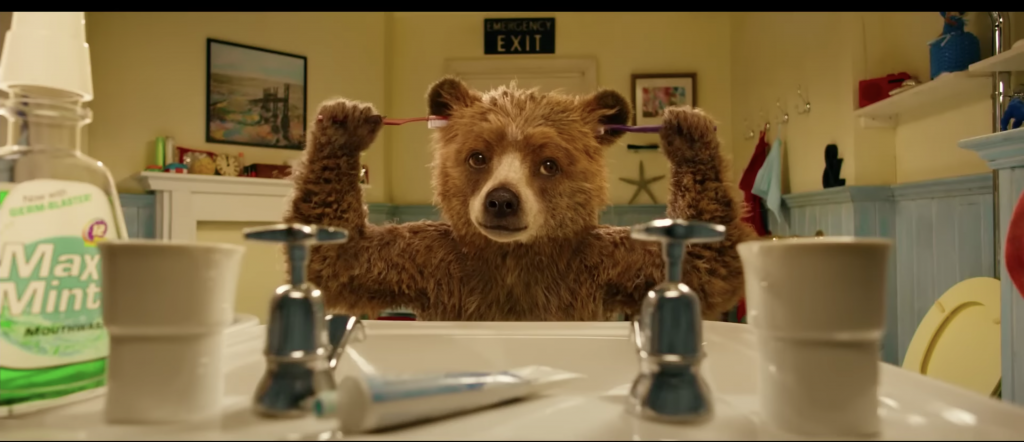
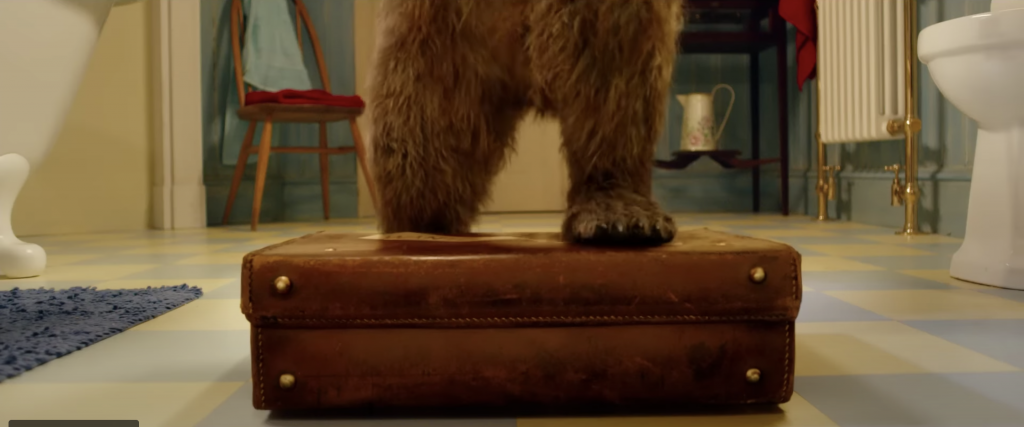
Even though this segment is based on slap-stick humour and presented with upbeat non-diegetic music, it carries a deeper meaning in regard to human/animal relations and the depiction of the non-native in the modern world. Paddington is intruding into a new place which he is beginning to learn is not at all that he or his aunt imagined and exhibits culture shock. As any immigrant knows it is much harder to incorporate yourself into a new social setting when you do not know what you are doing or how to act. Furthermore, the cinematic features in this segment truly capture his struggle in adapting to his new life with the Brown family as the animalistic features of the bathroom appliances also capture natural things he may have dealt with in Peru such as snakes extreme weather and droughts, yet they appear in a different frame. These elements elevate the idea of trying to adapt to new properties based on Paddington’s past known experience, as he is uninformed about their purpose, yet he needs to learn their meaning and usage as his subjective interpretations lead to disaster. Hence, he uses toothbrushes to clean his ears and he drinks mouthwash which set off a chain reaction of disaster as he tries to drink from the toilet bowl as if it were a natural water hole to quell the taste of mouthwash that he’s erroneously ingested.
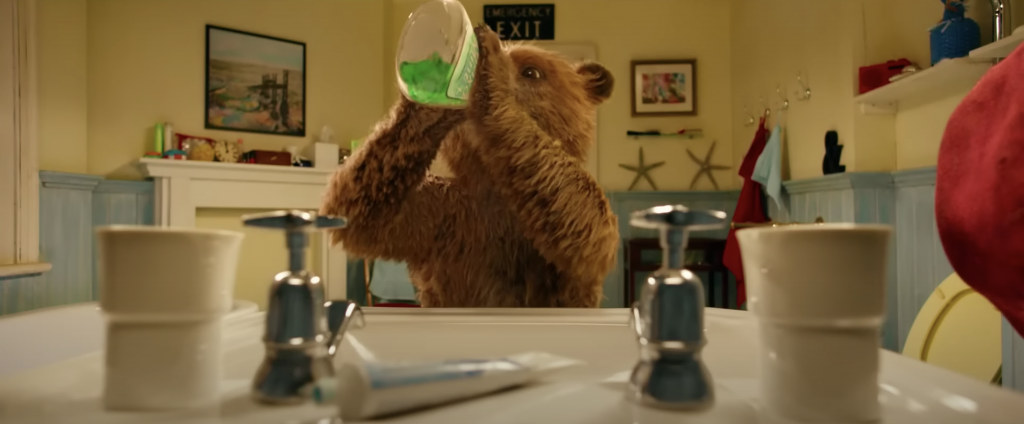
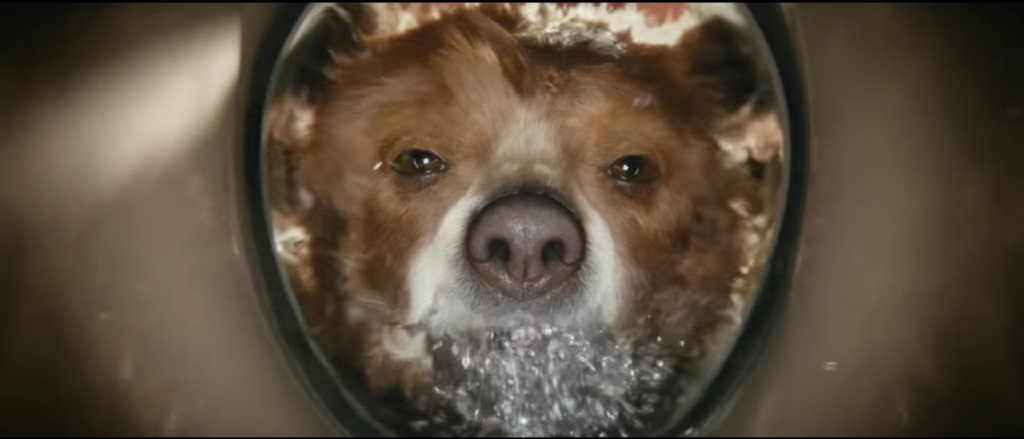
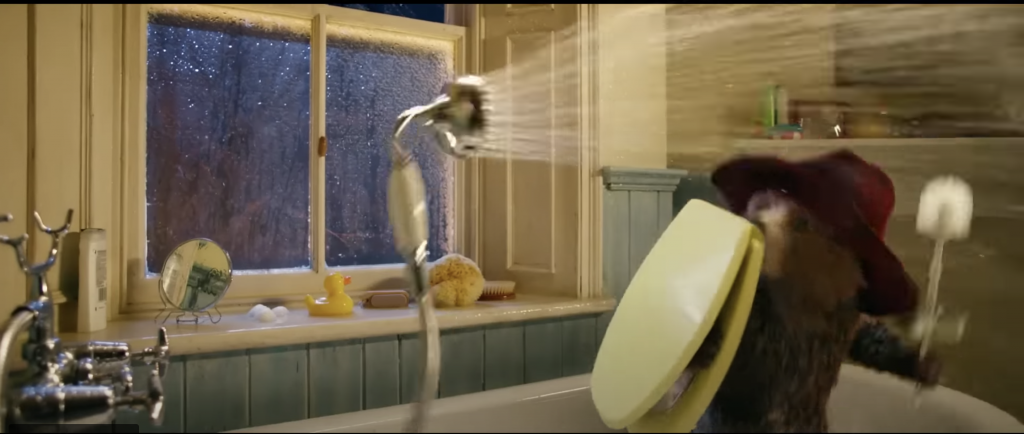
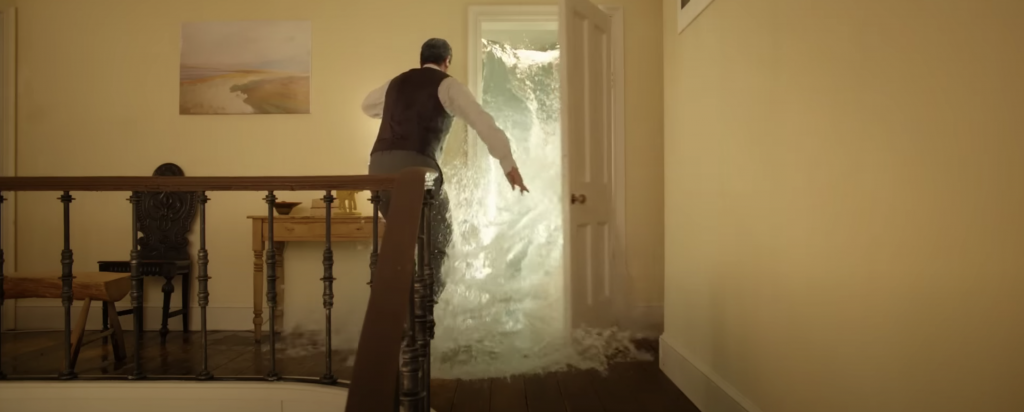
This scene portrays the idea of Paddington being the ‘other’, as the uncivilised non-native who is ridiculed and causes consternation at the trail of disaster he sets off when trying to master simple domestic tasks. The reason I use the word ‘ridiculed’ here is due to the fact that despite being portrayed as a fun-loving child-like character, we have to look at the subliminal meaning of how he is continuously used as the butt of humour, whose buffoonery is linked to comical factors. As the comical protagonist within the film, as in this bathroom scene, this enables the viewer both to laugh at and pity him at the same time in the knowledge that he is out of control and will continue to cause havoc as he tries to cope with London life. Paddington unleashes chaos with him in multiple situations during the film, which is seen as a delight to enjoy this chaos, but this chaos is carried with him in attempting to fit in to his new life and location, yet is hampered by making mistakes which he cannot grasp. They also seemingly go unaided as no one appears to be intent on teaching him the norms and mores of British daily life such as how to use a bathroom, which highlights how disconnected and unempathetic humans can be in their own lived experiences based on assumptions that everyone knows how to use a bathroom, for example, which clearly has cultural connotations. This again mirrors the experience of the alienated ‘other” as they struggle to survive the difficulties of a new urban life without direct assistance or compassionate care.
The comedic pleasure of the text resides in the continuous loop of sequences exemplified by the bathroom scene which maps out Paddington’s cultural challenges. The power of humour is being used here to perhaps provoke the audience to re-examine their assumptions about the everyday rules and rituals they ascribe to and the mythic judgments we attach to them to determine constructed benchmarks of being ‘civilised’ based on being in the know about how to go about daily life such as using a toilet, a shower or a bath. All of these objects in other contexts can have other uses and symbolise different purposes – a bath can be seen as a boat, for example, and a shower as a waterfall. When Michael Bond wrote the book in the 1950s, many immigrants were entering the UK from the Commonwealth and post-colonial nations by sea, this also continued from 2011-2014 in the wake of the Syrian war resulting in the largest global displacement and immigration crisis, which the Director may be alluding to here as the core of Paddington’s personal, experiential story.
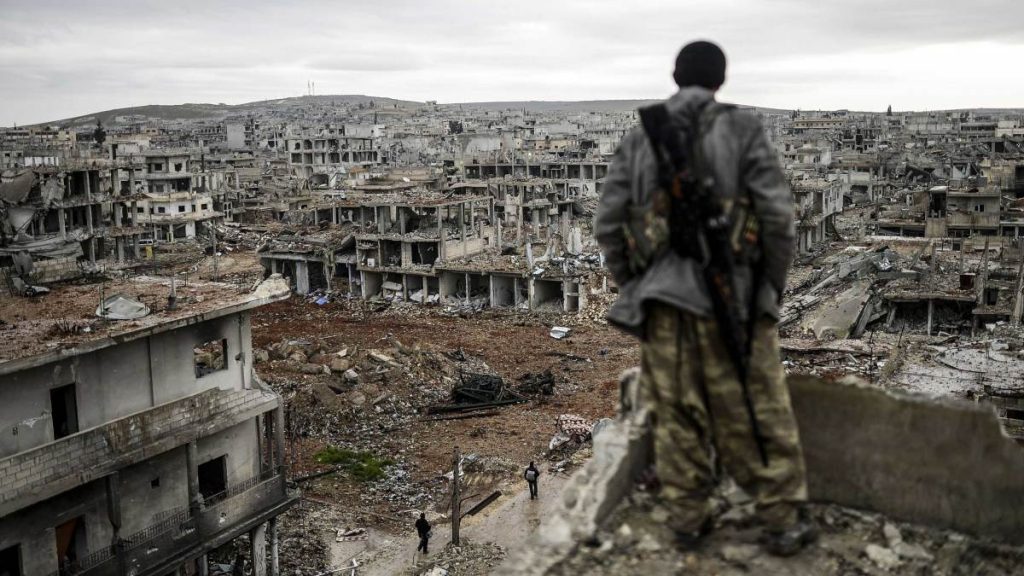
At the same time, the staged chaos that Paddington causes in the bathroom scene based on his unfamiliarity with how things work and are done in typical domestic settings, in the Global North allude to his general newcomer and ‘outsider’ status and the deeper cultural divide from the Global South. Daily functions such as the inability to comprehend cleaning teeth, bodily washing and flushing toilets are presented as an exaggerated comedic point within the film causing a knock-on effect resulting in Paddington flooding the entire house and sailing down the stairs in the boat-like bath on a tsunami of water that he has unleashed in the bathroom by dislodging the plumbing in his panic to cope with using it. It also mirrors the evolution of the child into adulthood as they struggle to take control of the everyday appliances that they are often protected from by parents until they are given permission to do so and trained to use them. Arguably this scene derives humour by making fun of someone who is adapting to, and learning a new life by making mistakes. It further alludes to the emotive experiences of the illegal immigrant who arrives off the boat to encounter an unknown place. The shocked expressions on the faces of the Brown family as Paddington crashes into their kitchen in the bathtub on a wave of water at the end of the scene’s denouement, symbolise the mixed, often hostile emotions that outsiders instil in their first encounters with established inhabitants and further highlights the emotional difficulties and battle for acceptance that all new arrivals encounter in another lived context.
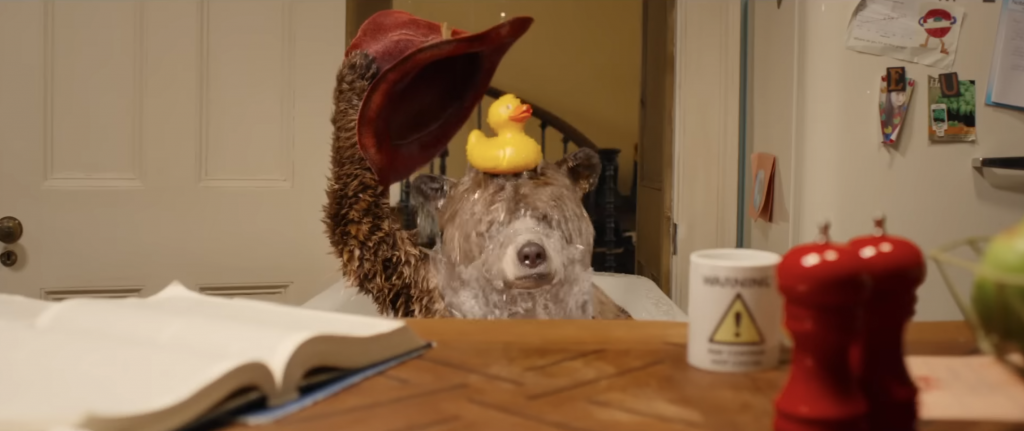
Bibliography –
BBC (2016). Syria: The story of the conflict. BBC News. [online] 11 Mar.
King, P. (2020) Paddington, Shower scene. , YouTube . Google.